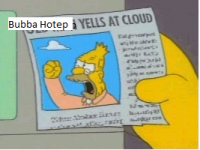#2016 Postby Texas Snow » Sat Feb 01, 2020 5:43 pm
FWD:
.LONG TERM... /NEW/
/Monday through Friday/
Above normal temperatures are anticipated for the start of the
first full week of February. Thereafter, the primary forecast
concern will revolve around the potential for storms and winter
weather across North and Central Texas late Tuesday and into
Thursday. The bottom line is that there could be a brief period
for strong storms across East Texas on Tuesday. The best chance
for winter precipitation will be near and northwest of a Comanche
to Mineral Wells to Gainesville line. It is here that some travel
problems may develop due to snow/sleet and possibly very light
icing. While other areas across North and Central Texas may
experience a mix of winter precipitation, impacts should be
limited to elevated surfaces such as bridges and overpasses. There
is still some uncertainty regarding the forecast, so be sure to
check back for details. What is just about guaranteed is that
it`ll turn much, much colder late Tuesday into Wednesday.
Breezy south to southwesterly winds will overspread the region on
Monday and for parts of the day on Tuesday, as surface
cyclogenesis commences across western Kansas. Low level WAA may
result in a few showers late Monday...especially across East
Texas. Tuesday will be mild and humid with a continuing risk for
isolated showers. As the 996mb low transits eastward into the
Flint Hills, a strong cold front---seemingly Arctic in nature---
plunges southward through the Great Plains. Current upstream
observations across the western Canadian Provinces (Northwest
Territories and Yukon) indicate temperatures in the 10 to 20
degree below zero range. While becoming largely modified, it`s
appearing more probable that this cold airmass will make a run
southward.
What has been the computer model trend over the past 12-24 hours?
The most significant change is that guidance has trended colder.
While the latest ECMWF does remain on the warmer side of the
guidance envelope, it has sped up the progression of the Arctic
front. As noted yesterday, these types of frontal boundaries are
oftentimes misrepresented in coarser model guidance. The 12 and 18
UTC NAM support the surprisingly consistent GFS with a fast FROPA
through the entire area by 00 UTC Wednesday. With the ECMWF
trending colder and the additional NAM guidance...I`ve nudged
temperatures downward below blended guidance for most of the area
on Tuesday and Wednesday...though parts of Central Texas may
still bake in the pre-frontal air late Tuesday morning/early
Wednesday afternoon. It will also be quite windy behind the front
and while a little early, I could certainly see the need for a
Wind Advisory across most of the area Tuesday and into Wednesday.
While highs on Wednesday will be in the 30s and 40s (colder if the
latest ECMWF is to be believed), it`ll feel as if it were in the
teens and twenties for parts of the area! There is very high
confidence that it`ll at least be wind and cold, so individuals
should be prepared for that!
Ahead of the front...a corridor of richer low level moisture (60
degree dewpoints) will funnel northward. With sufficient low
level convergence along the front, there could be a risk for
showers and thunderstorms. Mid-level flow is around 50-60 knots,
suggesting the presence of some deep layer wind shear. Instability
may build up to around 800 J/kg and there may be an attempt at
some organized convective modes..capable of gusty winds and small
hail. However, the speed of the Arctic airmass will likely
undercut convective updrafts and I believe that this will hamper
the severe weather risk for our area. If the front slows, the
severe weather threat may ramp up some.
NAM guidance does dry the troposphere out rather quickly in the
wake of the front and this would spell a quick end to
precipitation and little to no winter weather across the area
(just cold and dry). The GFS and ECMWF suggest a bit more in the
way of remnant moisture post-FROPA. Forecast soundings from the
GFS and ECMWF certainly support a p-type of rain transitioning
briefly to a freezing rain and eventually a snow/sleet mix. The
most likely area for winter precipitation will be near and
northwest of a Comanche to Mineral Wells to Gainesville line.
Forecast soundings support a classic moderate snow/sleet
precipitation type with a very saturated sub-freezing column with
a decent isothermal layer just atop the surface. Moreover, there
appears to be ascent within the dendritic growth zone and this
could lead to some respectful snow/sleet rates and I believe
accumulating snows are looking increasingly likely to the
northwest of the D/FW Metroplex. NBM snowfall probabilities/mean
snowfall amounts have also increased and support 1 to near 2" of
snow/sleet for areas near and northwest of the Comanche to
Gainesville line. If any banded precipitation structures establish
themselves (which looks like a reasonable chance), higher amounts
are possible somewhere across the region. We`ll have a closer
look at the potential for accumulating winter in the next few
forecast packages before any winter weather headlines.
Further to the southeast (including the Sherman/Denison...D/FW
Metroplex and Waco/Temple/Killeen areas), I`m expecting a
potential for a light mix of snow, sleet and rain. As it stands
right now, it`s less likely that banded precipitation structures
establish themselves along this corridor, and I don`t expect much
in the way of widespread snow/sleet/ice accumulation. However,
there may still be a slick spot or two on area bridges and/or
overpasses. Across East Texas and the Brazos Valley, mostly a cold
rain along with a snowflake or sleet pellet cannot be ruled out,
but impacts are expected to be very minimal.
Precipitation chances should taper of on Thursday, but much colder
conditions are anticipated with highs in the 40s and 50s. If it
looks increasingly likely that we`ll have a snow pack across the
area, parts of western North Texas and the Big Country may be even
colder than advertised. It looks like we`ll be headed for a much
warmer end to the outlook period as southwest flow develops and
allows temperatures to climb into the 60s.
Bain
0 likes
"Don't let wishcastin get in the way of your forecastin"
 The posts in this forum are NOT official forecast and should not be used as such. They are just the opinion of the poster and may or may not be backed by sound meteorological data. They are NOT endorsed by any professional institution or
The posts in this forum are NOT official forecast and should not be used as such. They are just the opinion of the poster and may or may not be backed by sound meteorological data. They are NOT endorsed by any professional institution or 
















